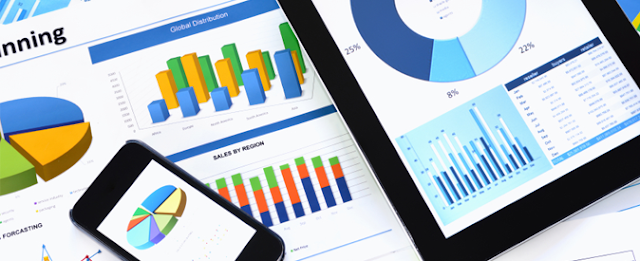"Many number crunchers(Accountants) these days are being asked by their clients about Business Intelligence(BI).. about what it is, and if they need to use it in their businesses"
So,
you’re an Accountant or financial professional working in commercials or public practices, right. You can manipulate data on a spreadsheet with the best of them, you can
credit and debit with and you explain any portfolio, chart of accounts, at the end of each month you can complete the balance
sheet or P&L and present them to the stakeholders. You may think that is all you need to do for the job and that Business Intelligence
tools are not applicable to your role or function but please just give another thought!
Consider the data with which you work. Numbers
come from many sources within an organization and those numbers come together
to paint a picture – or at least they should. Understanding trends, patterns
and results can help you to help a business in ways you never dreamed possible.
Using BI tools to manage your own business can also help you to achieve better
results, reduce unnecessary costs, do more for your customers, find and fix issues and capitalize on
opportunities, and all these can be done just a few clicks.
Think about the treasure trove of data sitting in a general
ledger and in financial and accounting records. What if you could look at a
customer’s objectives and data and analyze how your customer could do better?
If you could anticipate developments based on patterns and trends you could
offer a valuable service to your clients and improve your customer satisfaction
and your revenue.
Or if you are a payroll person, remuneration and employee costs are the most obvious area, but to
extract maximum value from this data it is important to drill down to a
granular level. Many organizations try to understand the costs such
as overtime and absence – what causes them to be high and when they are
most likely to occur, Payroll should also
be using analytical tools to provide more sophisticated data and insight
to the management teams. Providing more accurate forecasts over a year
will really help managers to make right decision.
“Don’t forget the beauty part of BI is you can drill down to get to the root cause of problems, it can’t be done in excel”
By integrating data from accounting, financial, payroll and
other systems, those columns of numbers can be presented in a personalized BI
dashboard for reporting, customized alerts and other valuable features and
outputs that will help you to help your clients. BI tools provide
multi-dimensional aggregation and analysis of data, drill down and drill
through functionality to get to the root cause of problems, easy graphical
and OLAP tools for reporting, and an interface that any user can adopt with
ease. You don’t have to be a programmer or statistical analyst to use these
self-service tools such as Power BI, Qlikview or Tableau.
Even more,you can accurately
forecast and anticipate results to see how to balance business growth, expenses
and financial investments. You can use data mining to suggest ways to
improve results. If you are an auditor, you can leverage the features within BI
tools and solutions to find and analyze critical areas and results and thereby
help your clients to be proactive in their approach to business management, as
well as providing crucial feedback on governmental, regulatory and industry
compliance and standards. If you work in the Financial Services industry, you
can use BI tools and personalized dashboards to monitor results, transactions,
rate and price changes, etc. So
you might think about which is the most appropriate BI tool for you, just one piece
of advice, it is important to look for solutions that are easily integrated
with your Accounting or Payroll systems like SAP, MicroPay, as well as ERP, SCM
and CRM systems – in short, any critical enterprise system that may contain
data to be used for accounting, financial and/or investment analysis. With the
right tools, your business can expand its client services and offer dependable,
valuable advice that will attract and retain customers, and partners.
By Chen Yang


No comments:
Post a Comment